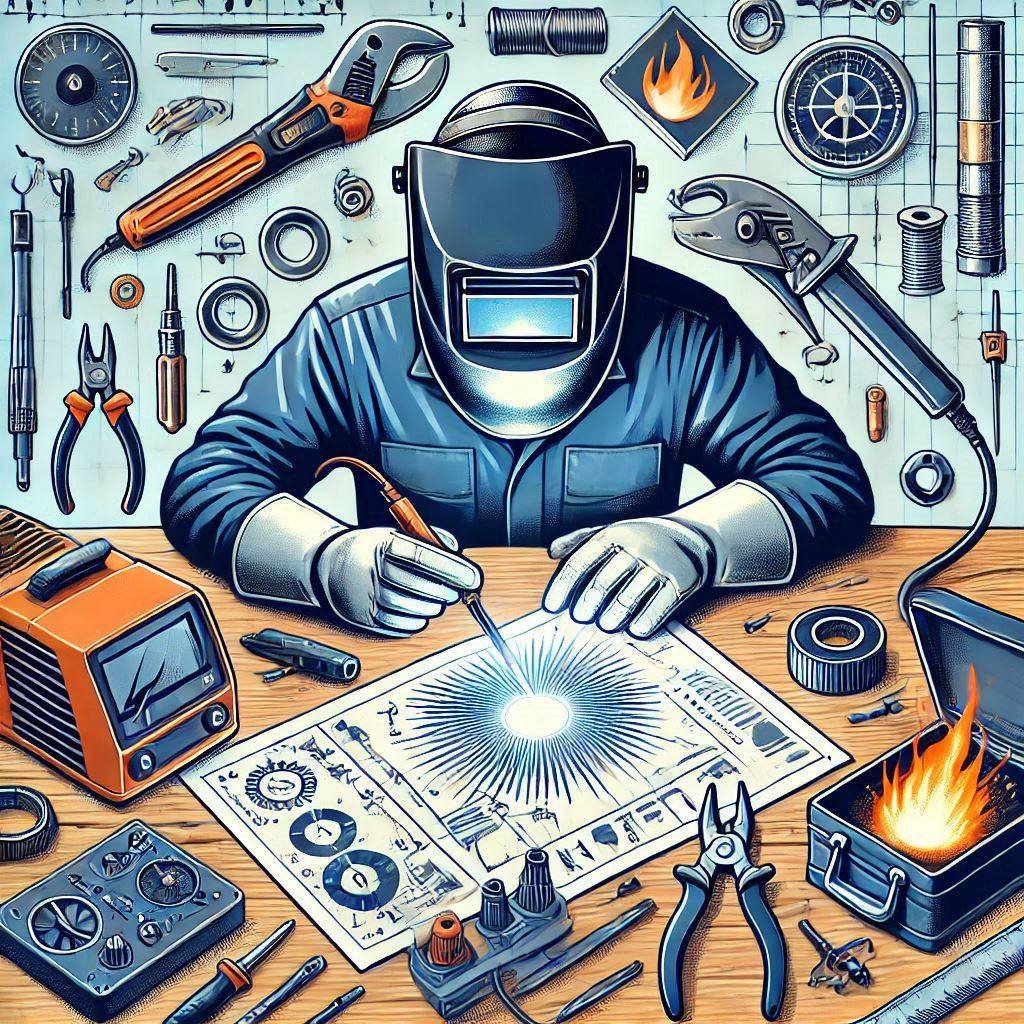How to Learn Welding as a Hobby: A Comprehensive Guide for Beginners

Introduction to Welding as a Hobby
Have you ever wondered how to learn welding as a hobby that could transform your weekends, spark creativity, and potentially even generate some extra income? Welding isn’t just for industrial professionals anymore—it’s become an incredibly engaging and rewarding hobby for DIY enthusiasts, artists, and makers looking to create something extraordinary with their own hands.
As someone who’s explored various hobbies, I can tell you that welding offers a unique blend of technical skill, artistic expression, and practical craftsmanship. Whether you’re dreaming of building custom furniture, creating metal art, or simply enjoying the satisfaction of transforming raw materials, learning welding can open up a world of possibilities.
Why Welding Makes an Exceptional Hobby
Welding goes beyond just joining metal pieces—it’s about understanding material science, developing precision, and bringing your creative visions to life. From productive hobbies to skill-based crafts, welding stands out as an incredibly versatile and engaging pursuit.
Understanding the Basics of Welding
What is Welding?
At its core, welding is a fabrication process that involves permanently joining two or more metal pieces by applying heat, pressure, or both. Think of it like an advanced, high-temperature glue that creates incredibly strong bonds between metal surfaces.
Types of Welding for Hobbyists
When you’re learning how to learn welding as a hobby, you’ll encounter several welding methods:
- MIG Welding (Metal Inert Gas)
- Most beginner-friendly
- Uses a wire feeding gun that melts wire into the weld
- Ideal for thin metals and various projects
- TIG Welding (Tungsten Inert Gas)
- Provides the most precise and clean welds
- Requires more skill and practice
- Perfect for intricate work and thin materials
- Stick Welding
- Traditional method using consumable electrodes
- Works well outdoors and with rusty or dirty metals
- More challenging for beginners but highly versatile
- Flux-Core Welding
- Similar to MIG welding
- Works better for outdoor projects
- Doesn’t require external gas supply
Safety: The Absolute Priority in Welding
Essential Protective Equipment
Before diving into techniques, understanding safety is crucial when learning how to learn welding as a hobby. Your protection should always come first.
Welding Helmets
- Auto-darkening models
- Proper shade ratings
- Comfortable fit
Protective Clothing
- Flame-resistant jackets
- Leather gloves
- Long pants
- Closed-toe boots
Respiratory Protection
- Welding respirators
- Fume extraction systems
- Understanding ventilation requirements
Workspace Safety Considerations
- Fire-resistant work area
- Proper lighting
- Clear, organized workspace
- Fire extinguisher nearby
- First aid kit
Getting Started: Equipment and Tools
Entry-Level Welding Machines
When learning welding as a hobby, choosing the right machine is critical:
- Budget-friendly options
- Power requirements
- Portability
- Brand reliability
Essential Hand Tools
- Angle grinders
- Chipping hammers
- Wire brushes
- Clamps
- Measuring tools
Recommended Starter Kits
Brands like Miller and Lincoln Electric offer excellent beginner packages that include:
- Welding machine
- Helmet
- Gloves
- Basic accessories
Learning Resources for Aspiring Welders
Online Learning Platforms
- Udemy Welding Courses
- YouTube Tutorial Channels
- Specialized welding websites
- Community college online courses
Local Learning Opportunities
- Community college classes
- Hobby workshops
- Maker spaces
- Local welding supply stores offering classes
Practice Projects for Hobby Welders
Beginner-Friendly Projects
- Metal wall art
- Garden sculptures
- Simple furniture pieces
- Tool storage solutions
- Decorative plant stands
Advanced Project Ideas
- Custom bike racks
- Outdoor fire pits
- Metal furniture
- Automotive repairs
- Sculptural art pieces
Cost Considerations
Initial Investment
- Entry-level machines: $300-$800
- Safety equipment: $200-$500
- Basic tools: $100-$300
Ongoing Expenses
- Consumables
- Electricity
- Replacement parts
- Continued learning
Common Challenges and Solutions
Beginner Mistakes to Avoid
- Rushing without proper preparation
- Neglecting safety protocols
- Incorrect machine settings
- Poor metal preparation
Troubleshooting Tips
- Understanding weld defects
- Adjusting machine parameters
- Practicing consistent techniques
Career and Hobby Opportunities
While learning how to learn welding as a hobby, you might discover potential side income opportunities:
- Custom fabrication
- Art commissions
- Small repair services
- Productive hobby monetization
Frequently Asked Questions
Is welding difficult to learn?
With proper instruction and consistent practice, anyone can learn welding.
How long does it take to become proficient?
3-6 months of regular practice for basic skills.
What’s the best welding method for beginners?
MIG welding is typically recommended for novices.
Conclusion
Learning welding as a hobby is an incredible journey of skill development, creativity, and personal growth. Embrace the process, prioritize safety, and enjoy creating something truly unique.
